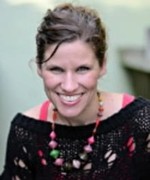Originally published Sunday, 01 June 2014.
It is the job of Christians to first educate themselves on the worldviews of today so secondly, they can educate their own generation and those to follow. We must identify and question the secular, naturalistic worldview that is abundant in literature, music, movies, and all areas of study so that we can teach and proliferate the Christian, biblical worldview bestowed by God. In so doing, we will further the gospel movement and thus the great commission (Matthew 28:20)
What does this look like in everyday circumstances? I have written previous apologetic posts that I think would help to explain such methods (here and here), but I feel a recent example is profitable.
I deeply love classic literature. Texts rich in vocabulary and bursting with the arts are part of everyday blessings that I desire to give my children. A well-written book, be it fiction or non-fiction, is inspiring to the psyche, it enriches our lives, and shapes the culture.
One such gem of children's literature is Kenneth Grahame's classic tale, The Wind in the Willows. Prior to reading this text with my children, I had only read portions of this story; never the full text.
Aside from the rich vocabulary, the artistic descriptions of scenery, character, and plot, I began to notice an underlying belief system of the author. In the infamous chapter seven, The Piper at the Gates of Dawn, two of the main characters, Mole and the River Rat, have a religious experience filled with worship for, Pan, the Greek god of the wild...nature. As I was reading this chapter to my children--keep in mind I had no idea this was approaching as this was my first read--I recognized immediately that significant nature worship was being depicted. Not only that, but the word nature itself is capitalized throughout the text thereby attributing anthropomorphic, human qualities, to a non-human concept. To capitalize nature is to equate nature with a god-like being responsible for the world we see today. It is to equate nature to God and His creation.
...then in the utter clearness of the imminent dawn, while Nature, flushed with fullness of incredible colour, seemed to hold her breath for the event, he looked in the very eyes of the Friend and Helper; saw the backward sweep of the curved horns, (The Wind in the Willows, Kenneth Grahame, emphasis mine)
Immediately, I used this as a teachable moment.
I reinforced the idea that people worship the created rather than the creator. Just as we talk about evolution as one way to help explain the world around us to the exclusion of God, they can in turn attribute deity to Nature. I explained that this doesn't mean we can't read this book or other books like it simply because of a different worldview. However, in reading such texts we should be aware of the underlying worldview and values from which the author is writing.
Making this chapter, or other literature with conflicting worldview narratives, taboo may heighten such texts to forbidden fruit. Conversely, openly discussing worldviews and other religious beliefs with our children in an environment where questions are welcomed and answers provided or looked up together, equips our children to handle future questions independently.
The saying, the devil is in the details applies here. We can equip ourselves, our children, and peers to recognize worldviews in the details so that we can sharpen our understanding of worldviews held by others and speak the truth of the Bible and a Christian worldview into the everyday situations of life.








